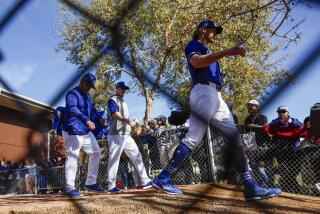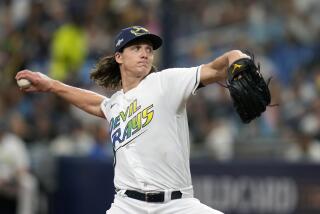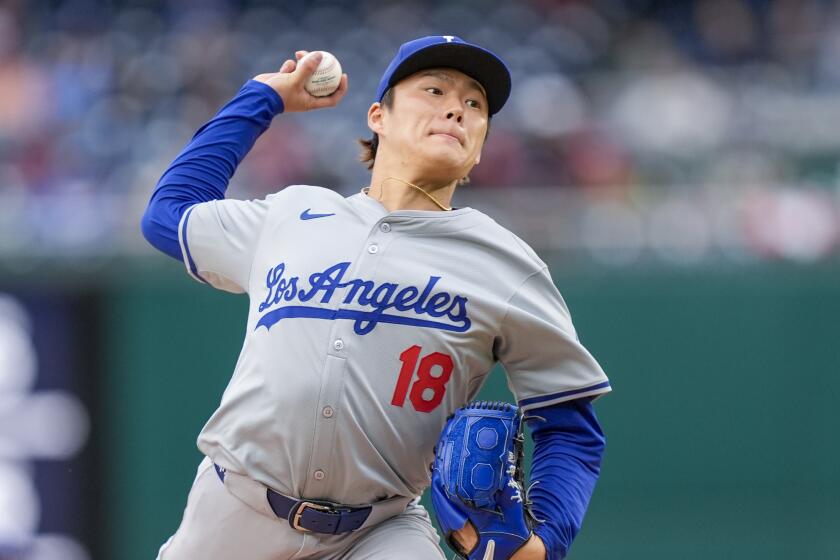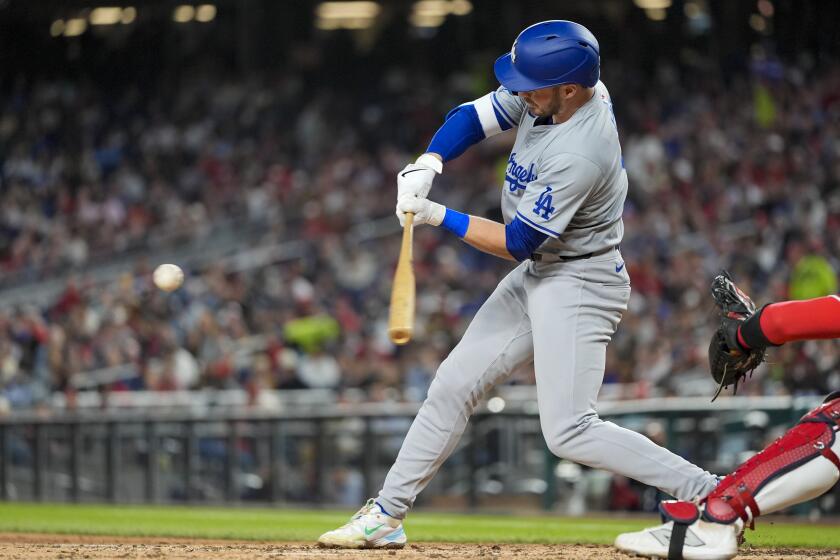Relief pitchers may become a factor for Dodgers to advance in playoffs

Brian Wilson in the eighth inning, Kenley Jansen in the ninth.
That was the late-inning formula the Dodgers used last year. And that was the formula they had in mind when they re-signed Wilson to a contract that could pay him $18.5 million over two years.
Jansen remains the closer as the Dodgers head into the postseason, but Manager Don Mattingly’s plan for the eighth inning is now more complicated.
He could use Wilson. Or left-hander J.P. Howell. Or Wilson and Howell. Or Howell and right-hander Brandon League. Or Wilson, Howell and League.
How did it get like this? In short, because Wilson isn’t the pitcher he was last season.
The bullpen, once expected to be a strength, is widely viewed as a vulnerability. The Dodgers relievers might not be a significant factor in the National League division series, as either Clayton Kershaw or Zack Greinke could pitch in as many as four of the five games.
However, in a seven-game series, the likes of Wilson and League will almost certainly have to record important outs for the Dodgers to advance.
Wilson posted a 4.66 earned-run average in 61 regular-season games. He gave up hits and walks at almost double the rate he did last year.
In some games, Wilson’s fastest pitch didn’t touch 90 mph.
That is particularly alarming because of Wilson’s medical history. When he signed with the Dodgers as a free agent last summer, he was returning from his second major elbow operation.
Wilson started this season on the disabled list with what was described as nerve irritation in his right elbow. Wilson denied anything was significantly wrong with his elbow then — he said the Dodgers’ season-opening trip to Australia didn’t allow him to properly prepare for the season — and he continues to insist he is healthy now.
“As far as you thinking I’m hurt, nope, that’s not the case,” Wilson said.
He pointed to last season.
“When I came back last year, it was 89-91,” he said. “When I decided to bring it up to 95 was the playoffs. I was 96 at the beginning of this year, but I was giving up runs.”
As the season progressed, Wilson has relied increasingly on his cut fastball and off-speed pitches, which he said explains why his radar-gun readings are down.
Asked whether he could still deliver a fastball in the mid-90s, Wilson replied, “If needed. But velocity isn’t the barometer for success, as I’ve so learned in this game. All you have to do is locate.”
The Dodgers’ other late-inning options, outside of Jansen, also offer reasons for concern.
Howell arguably had the best regular season of any of the relievers, but his team-high 68 appearances appeared to take a toll on his arm. His earned-run average went up by more than a run in his last four games — from 1.17 to 2.39 — as he was charged with seven runs in three innings.
League recovered nicely from a disastrous 2013 by posting a 2.57 ERA in 63 games. However, League is prone to walking batters and often relies on double plays to get out of trouble, turning several of his appearances into high-wire acts.
But Wilson, who recorded the last out of the World Series for San Francisco in 2010, is convinced the relievers will perform better in October.
“Every single pitch during a playoff game, all eyes are on it,” he said. “Because it’s do-or-die. It’s go-home. During the regular season, there’s no going home after that game. There’s no being penalized. You just play a game and the adrenaline might not be there sometimes.”
More to Read
Are you a true-blue fan?
Get our Dodgers Dugout newsletter for insights, news and much more.
You may occasionally receive promotional content from the Los Angeles Times.







